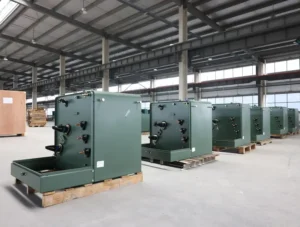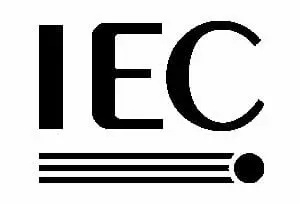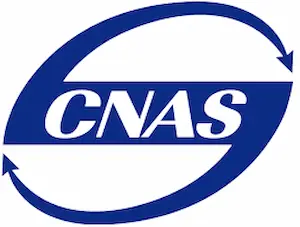Distribution Transformer Standards in Canada

In Canada, distribution transformer standards are primarily governed by the Canadian Standards Association (CSA), with a strong emphasis on energy efficiency and environmental sustainability. The main standards include CSA C802.3 for energy efficiency, and CAN/CSA-C88-M90, which defines performance and safety guidelines for distribution transformers. These standards ensure transformers are designed to minimize energy losses, operate efficiently in Canada’s diverse climates, and meet regulatory requirements for safety and reliability.
Key Takeaways
CSA Standards: Canada’s distribution transformers are primarily governed by CSA C802.3-13 (energy efficiency) and CAN/CSA-C88-M90 (performance and safety).
Energy Efficiency Focus: CSA C802.3-13 sets minimum efficiency levels to reduce energy losses, aligning with Canada’s environmental goals and reducing operational costs.
Performance and Safety: CAN/CSA-C88-M90 ensures transformers meet stringent performance standards, including temperature limits, short-circuit withstand, and dielectric strength, essential for Canada’s diverse climate.
Cold Climate Reliability: Canadian transformers are designed to operate effectively in extreme temperatures, particularly in sub-zero conditions, with enhanced insulation and materials.
Environmental and Cost Benefits: These standards help minimize energy losses, contributing to environmental sustainability and lowering energy costs for utilities and consumers.
Practical Implementation: Transformers must undergo rigorous testing and certification to meet the CSA standards before being deployed in the Canadian grid, ensuring safe and reliable operation.
Skid Mounted Transformer(Small-substastion Transformer)
Single Phase Pole Mounted Transformer
Oil Immersed Power Transformer
Table of Content
CSA Standards for Distribution Transformers
The Canadian Standards Association (CSA) provides the primary framework for transformer standards in Canada. These standards cover various aspects of transformer design, operation, and testing to ensure safe and efficient performance, with a particular focus on reducing energy losses and meeting environmental regulations.

CSA C802.3-13 – Minimum Efficiency Standards for Distribution Transformers
CSA C802.3-13 is the primary standard that defines energy efficiency requirements for distribution transformers in Canada. It plays a critical role in the Canadian government’s strategy to reduce greenhouse gas emissions and energy consumption.
Get it now: What is a pad-mounted transformer?
Key Provisions of CSA C802.3-13
- Scope: This standard applies to liquid-filled and dry-type distribution transformers. It is intended for transformers used in residential, commercial, and industrial applications to reduce energy losses and improve overall efficiency.
- Efficiency Metrics: The standard specifies minimum energy efficiency levels that transformers must meet based on their capacity and voltage ratings. These levels are determined by calculating the transformer’s no-load and load losses, which are key indicators of how efficiently the transformer operates.
- Testing and Certification: Manufacturers must test their distribution transformers in compliance with CSA C802.3 to ensure they meet the specified efficiency levels. Once tested, transformers are certified as compliant before being sold in the Canadian market.
The primary goal of this standard is to reduce energy losses, which helps to lower operational costs and environmental impact. Compliance with this standard is mandatory for manufacturers supplying transformers in Canada.
CAN/CSA-C88-M90 – Performance Standards for Power Transformers
The CAN/CSA-C88-M90 standard outlines the performance and safety requirements for distribution transformers in Canada, focusing on both liquid-filled and dry-type transformers.
Key Provisions of CAN/CSA-C88-M90
- Scope: This standard provides guidelines for the design, construction, and testing of distribution transformers to ensure they meet the necessary performance criteria for the Canadian power grid.
- Temperature Limits: Transformers must operate within specified temperature ranges to prevent overheating, which could lead to failure. This is especially critical in Canada, where transformers must withstand a wide range of temperatures, from extreme cold in winter to summer heat.
- Short-Circuit Strength: The standard ensures that transformers can handle the mechanical and electrical stresses associated with short-circuits without significant damage.
- Dielectric Strength: The transformer’s insulation must be capable of withstanding normal operating voltages as well as voltage surges caused by transient events such as lightning strikes or switching operations.
This standard ensures that distribution transformers are reliable and durable, capable of performing under the harsh weather conditions that can occur across Canada’s vast geography.
Practical Implementation of CSA Standards in Canada
The CSA standards, particularly CSA C802.3-13 and CAN/CSA-C88-M90, form the backbone of Canada’s approach to ensuring that distribution transformers are safe, efficient, and environmentally sustainable. Here’s how these standards are implemented in practice:
Design and Manufacturing Compliance
Manufacturers of distribution transformers in Canada must ensure that their products are designed according to the energy efficiency and performance standards outlined in CSA C802.3-13 and CAN/CSA-C88-M90. This includes selecting materials that reduce core and winding losses, designing enclosures to withstand environmental challenges, and ensuring that transformers can operate efficiently across various load conditions.
Testing and Certification
Before distribution transformers can be installed in Canadian electrical systems, they must undergo rigorous testing. This includes verifying their energy efficiency according to CSA C802.3-13 and ensuring they meet performance and safety requirements as outlined in CAN/CSA-C88-M90. Testing involves both laboratory evaluations and field trials to confirm that the transformers perform reliably in different environments, such as urban, rural, and remote areas of Canada.
Efficiency and Environmental Compliance
Canada places a strong emphasis on reducing the environmental impact of its energy systems. The efficiency standards set by CSA C802.3-13 ensure that transformers contribute to this goal by minimizing energy losses, which reduces overall electricity consumption. This focus on energy efficiency is aligned with the Canadian government’s climate policies aimed at reducing carbon emissions.
Get it now: What is a Skid Mounted Transformer?
Regional and Environmental Considerations
One of the key challenges for distribution transformers in Canada is the country’s diverse and sometimes extreme climate. Transformers must be capable of operating in environments that range from the frozen north to more temperate southern regions. The CAN/CSA-C88-M90 standard specifically addresses these challenges by setting stringent requirements for insulation, temperature limits, and mechanical strength.
Cold Climate Performance
In Canada’s northern regions, distribution transformers must be able to perform reliably in extremely cold conditions. CAN/CSA-C88-M90 includes provisions for ensuring that transformers remain operational even in sub-zero temperatures. This involves designing transformers with enhanced insulation and ensuring that internal components, such as oils used in liquid-filled transformers, do not freeze or lose effectiveness in cold weather.
Urban and Rural Applications
The CSA standards also take into account the different needs of urban and rural areas. In urban environments, distribution transformers are often located in densely populated areas, requiring additional safety measures such as tamper-resistant enclosures and noise reduction features. In rural or remote regions, transformers must be designed for ease of maintenance and long-term durability, as servicing may be infrequent due to logistical challenges.
Get it now: How does a Distribution Transformer Work?
Key Benefits of CSA Standards for Distribution Transformers
The implementation of CSA standards in the Canadian power grid has several key benefits:
Energy Savings and Cost Reduction
By mandating minimum efficiency levels in CSA C802.3-13, the standards ensure that distribution transformers operate with minimal energy losses. This not only reduces electricity consumption across the grid but also lowers operating costs for utilities and end users.
Environmental Sustainability
The focus on energy efficiency directly contributes to Canada’s efforts to reduce carbon emissions and mitigate the environmental impact of its energy systems. By reducing energy losses, CSA standards help decrease the overall demand for electricity generation, which often involves fossil fuels.
Reliability and Safety
The CAN/CSA-C88-M90 standard ensures that distribution transformers can operate safely and reliably in Canada’s diverse and often harsh environments. The standard’s focus on temperature limits, insulation, and short-circuit withstand capabilities guarantees that transformers are robust enough to handle the demands of the Canadian grid, whether in urban centers or remote locations.











